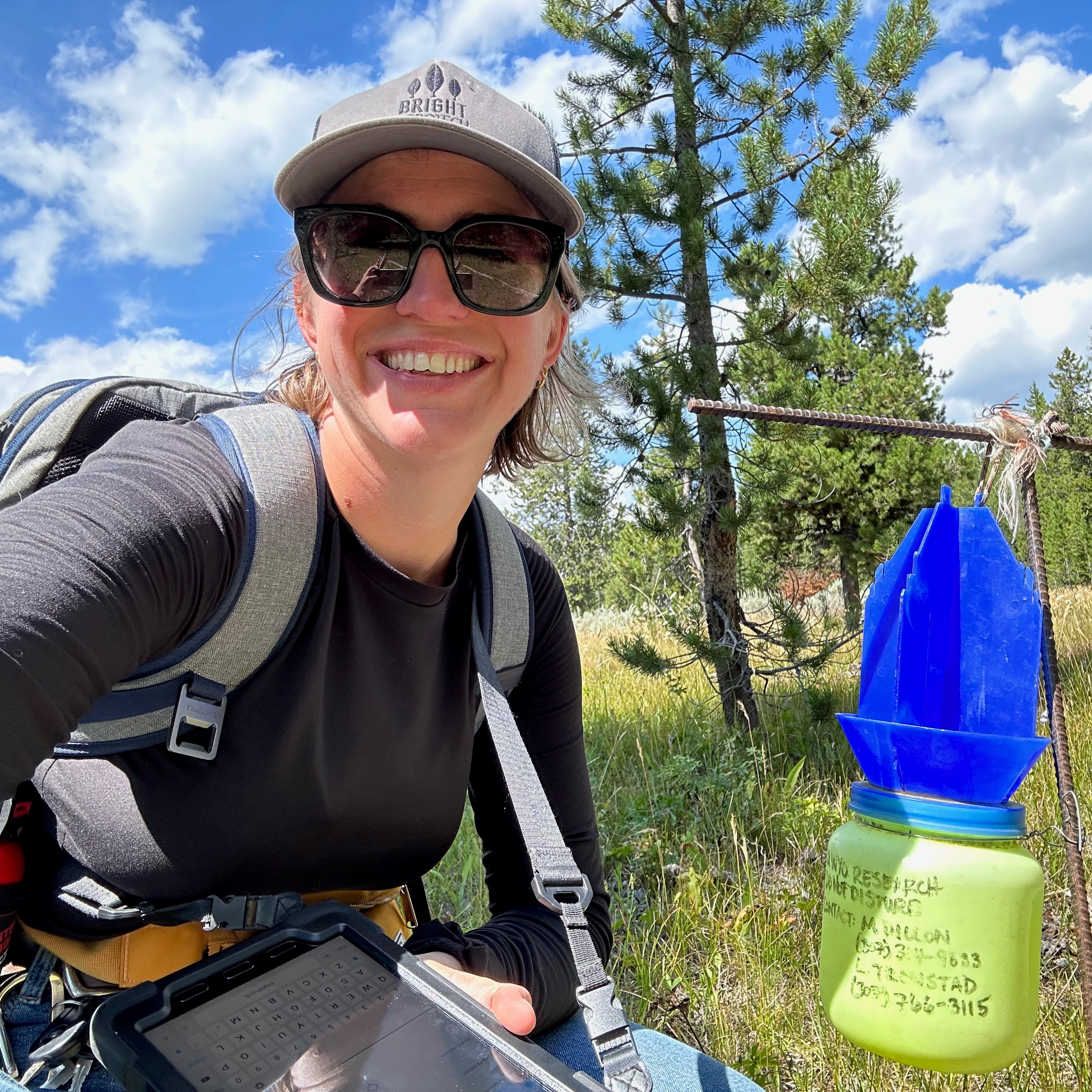Tana Verzuh - Searching for the Next Best thing: Factors Influencing Exploration in a Reintroduced Species with Key Implications for Biodiversity Restoration and Conservation
Tana Verzuh
The Richard Baldes Native American Excellence Fund in Biodiversity Conservation
Department of Zoology and Physiology
Graduate Advisor: Dr. Jerod Merkle

Questions and hypotheses:
Given that resources are not always clumped together in space, a fundamental challenge of mobile animals is to develop some sort of representation of the location of their goals (refuges, food, mates, etc.) and how to get to them. Indeed, animals across a broad array of taxa express impressive spatial and navigational skills in complex environments. While learning and memory are not required for movement, it is becoming increasingly clear that they play an important role in how animals exploit their environment. Understanding how animals learn their environment and incorporate that knowledge into movement decisions is particularly important for restorative ecology programs, such as reintroduction efforts, where success is often tied to how populations move and settle in new environments.
One behavior that exposes animals to the conditions for spatial learning is exploration (i.e., going to a new place and experiencing it). The motivation and decision to explore may arise from a change in internal state (hunger), competition, resource depletion, or other environmental factors (e.g., seeking thermal refuge). In a novel environment where individuals do not have prior information, however, exploration is likely driven by the interest and need to reduce uncertainty and gain information about their environment. Where an animal chooses to explore is likely influenced by information gathered from their immediate surroundings through sight, smell, or other cues. The recent re-introduction of naïve bison into Banff National Park, a novel ecosystem for this population, represents an invaluable opportunity to test hypotheses surrounding how populations explore novel habitats. Specifically, we will evaluate the mechanisms underlying the decision to explore. This work will have key implications for understanding the success or failure of re-introduction efforts by increasing our understanding of post-release exploration behavior and habitat selection.
Reintroductions are a critical method for recovering threatened species and restoring biodiversity. The success rate of reintroduction programs, however, remain low. Due to the increased number of reintroduction efforts, high implementation costs, and animal welfare, it is essential that reintroduction programs are evaluated and reported on to aide future program success. My research seeks to not only elevate our theoretical understanding of animal exploration, dispersal, and decision making but also through this understanding improve future reintroduction efforts.
Share This Page

Research Highlights




